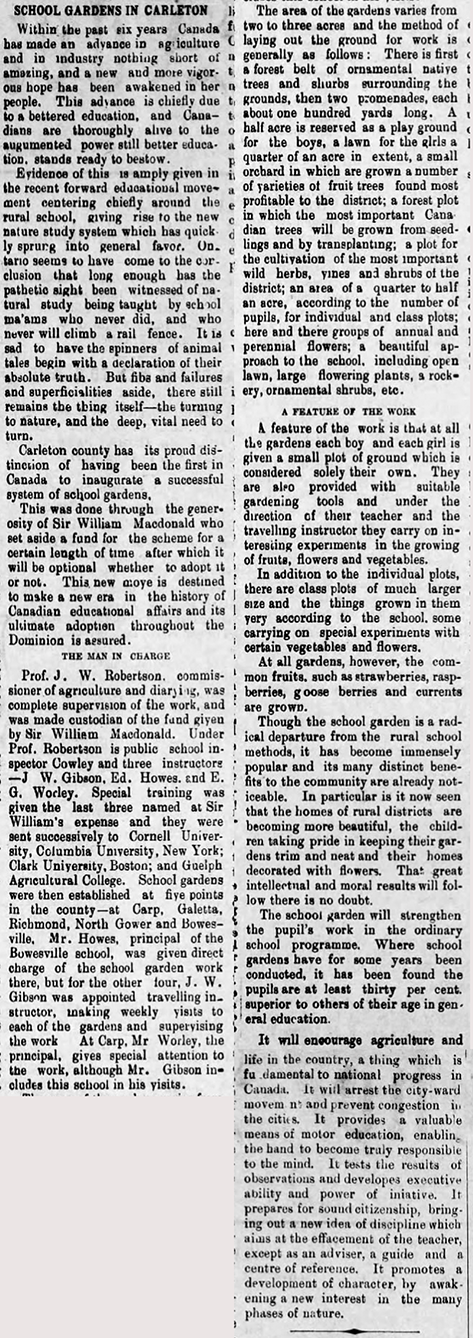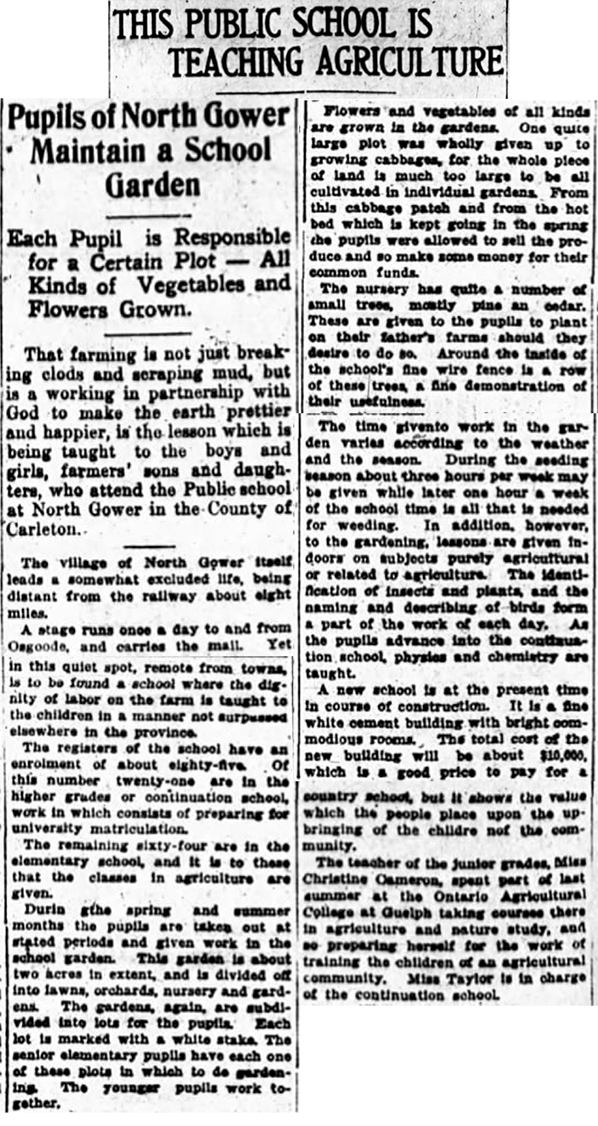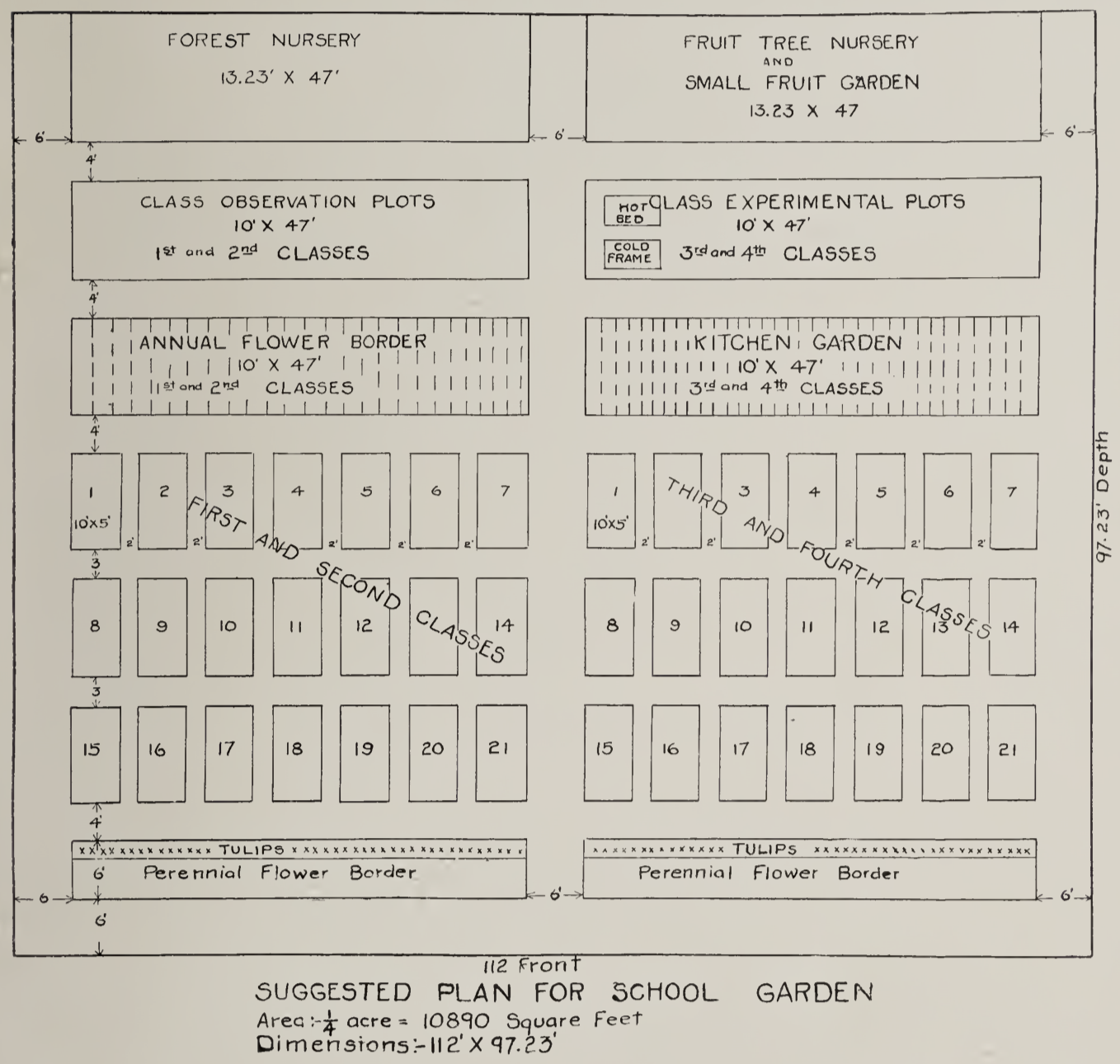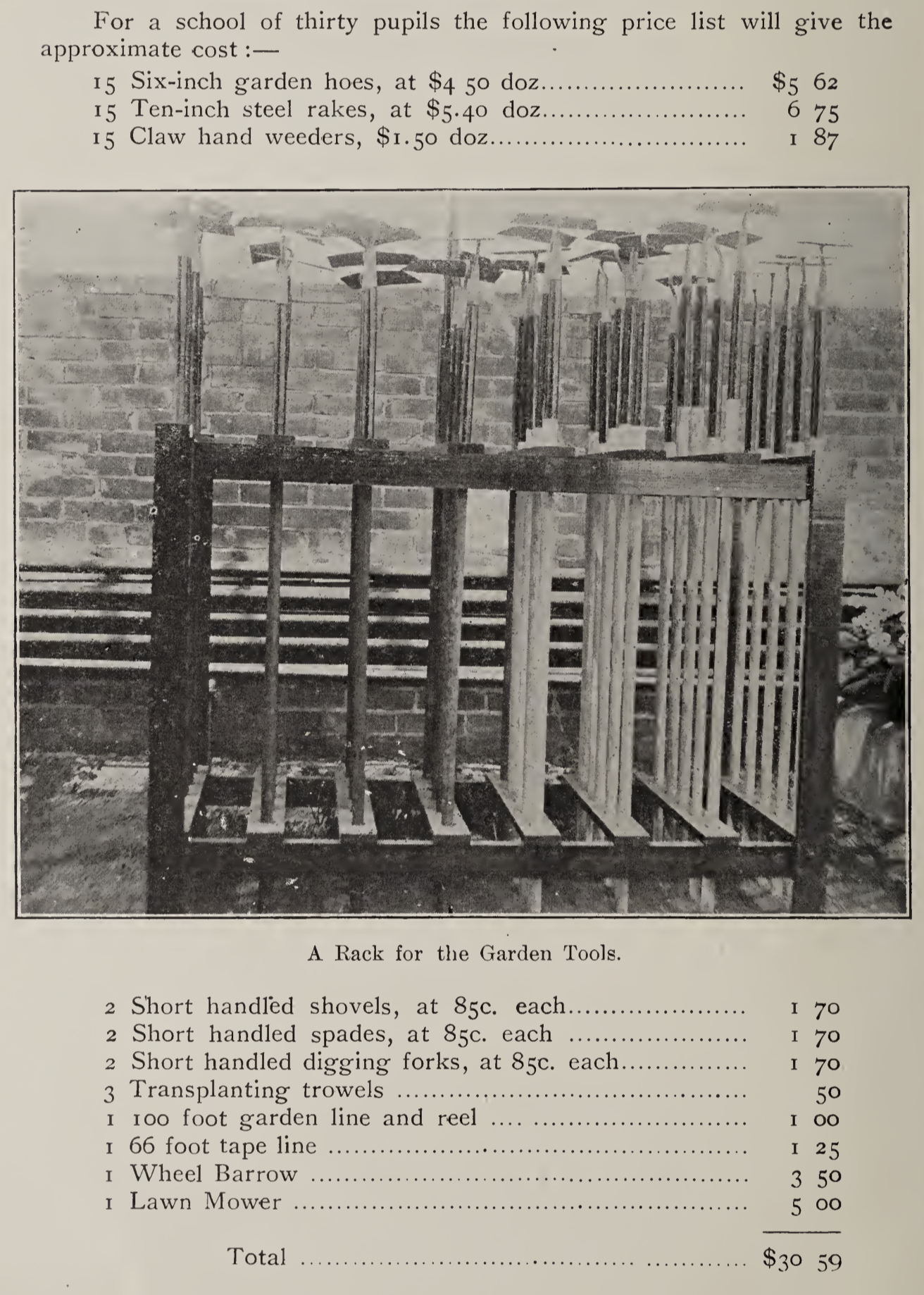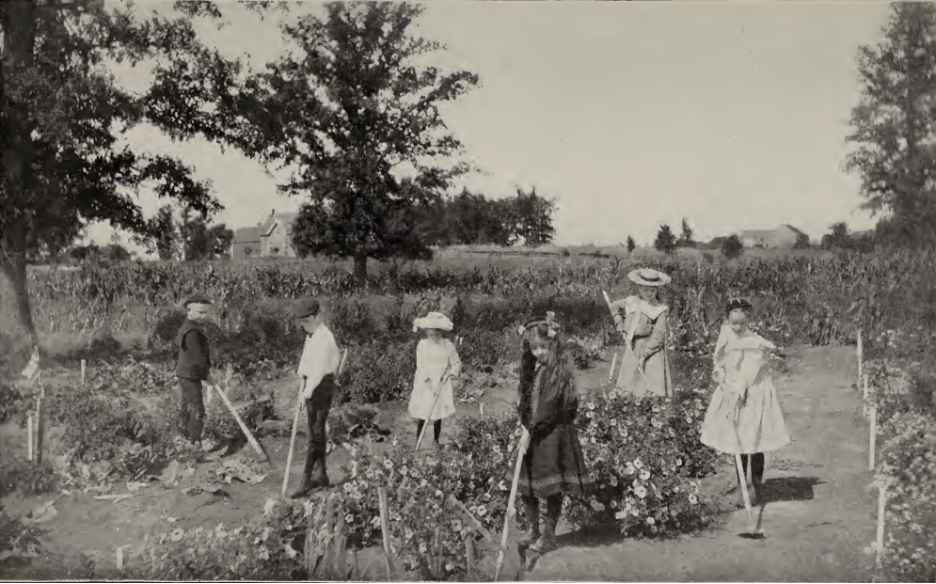School Gardens
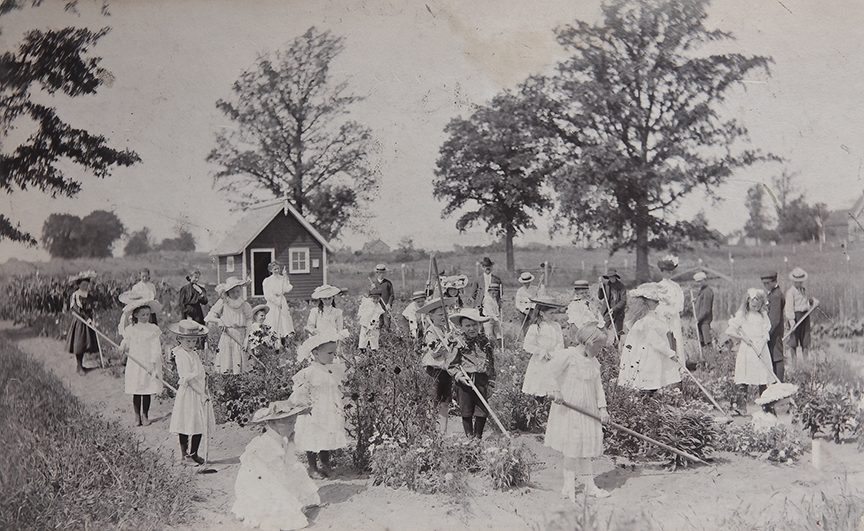
In the years leading up to Word War I, an undertaking emerged to address what was viewed as an emerging and undesirable tendency for rural children to migrate to more urban centres once they “came of age.” Many in government viewed this trend as detrimental to the development of the child, and the cultivation of the land.
The initiative, which in Ontario was given the formal name, ”Elementary Agriculture in Rural and Village Schools” had the following aims:
- To stimulate interest in rural life;
- To provide healthful exercise for body and mind, and to afford to the pupil an opportunity to direct his activities along useful lines;
- To develop at an early age habits of industry, respect for labour, and a love for productive and constructive work;
- To impart useful information in agricultural subjects;
- To give facility in the handling of tools and in the practice of garden craft;
- To promote the desire to improve home surroundings and to train boys and girls to do such work with efficiency;
- To promote the qualities that make for good citizenship, such as the responsibility of ownership, respect for public property, consideration for the rights of others and the principle of co-operation in seeking the com¬ mon good;
- To encourage careful observation of nature; thus enabling the pupil to understand his environment and to appreciate more fully the beautiful in nature; [5] 6
- To promote a spirit of independent investigation in other branches of study;
- To bring the life and interests of the school more closely into touch with the home life of the pupils.
The initial benefactor of this movement was Montreal businessman and philanthropist Sir William Macdonald. Inspired partly by fond memories of his own rural upbringing in Prince Edward Island, and by J.W. Robertson of the Central Experimental Farm and later federal commissioner of Agriculture and Dairying, Macdonald provided substantial funding for the training of elementary school teachers in practical agriculture, and for programs for the transfer of that knowledge and skill to rural school students.
As described in the articles below from 1905 and 1912 respectively, school gardens were extraordinarily successful in achieving many of their established aims. In fact, beginning in 1903 with the first 4 Ontario schools (all in Carleton County), by 1914 almost 300 Ontario schools were involved!
During World War I, while some school garden projects were suspended, others were transformed into "Liberty" or "Victory" gardens to promote the growing of food for the war effort. (This program was promoted during WWII as well.)
However, after WWI, governments largely abandoned the school garden aim of encouraging young people to stay on the land as migration to urban areas became inevitable.
Finally, some have pointed out that school gardens are making a resurgence on some fronts, with a new emphasis on environmental sustainability and stewardship.
